Biogeography Unit III
italicized words are key concepts
3.1- Mapping the Range of Species
Range- the geographic distribution of plants or animals
where a particular species can regularly be found
Distribution- pattern of where a certain species is observed and the relative frequency
Thematic Maps
Outline
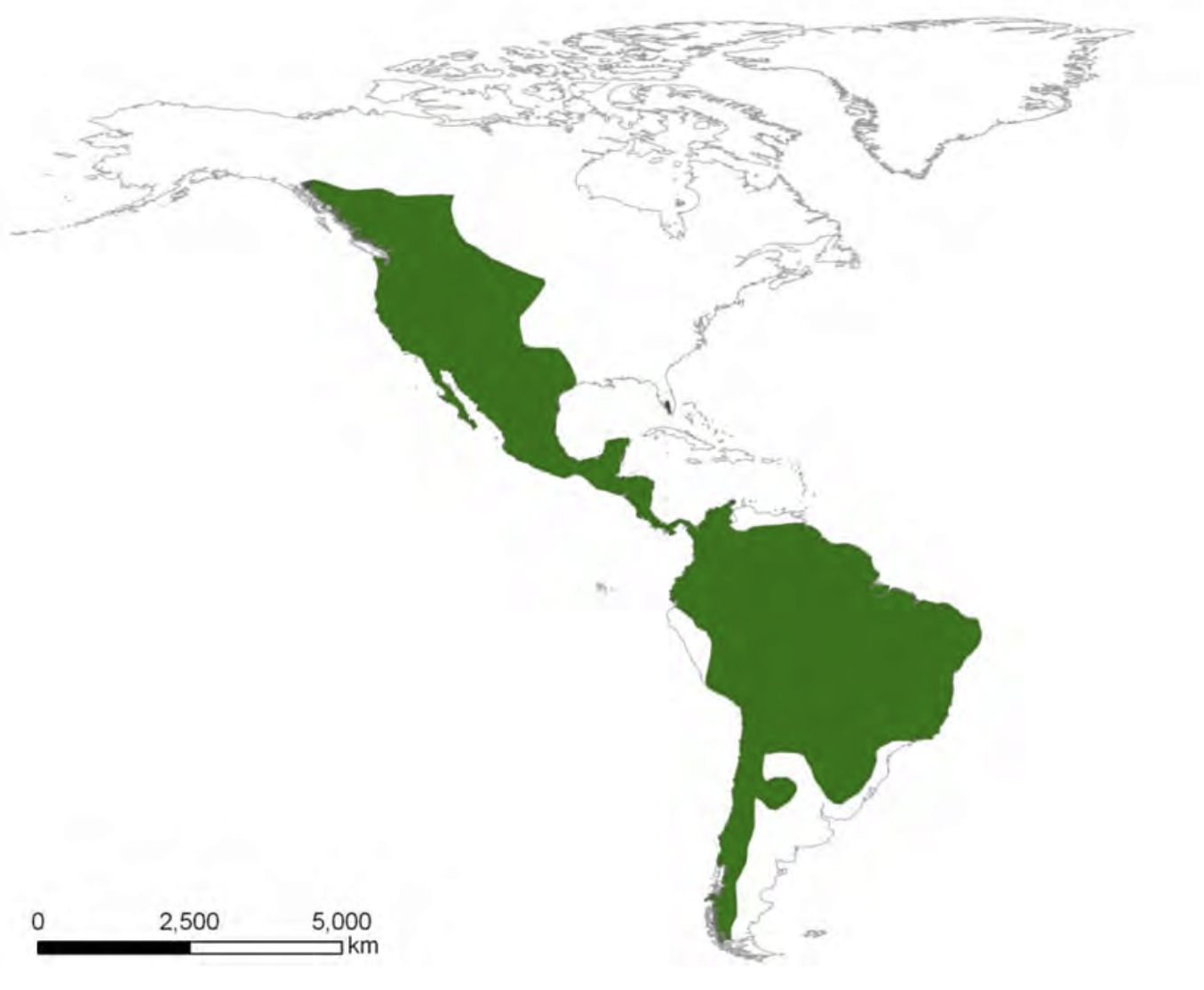
represent range as a solid colored polygon
location of polygon based on scientific understandings of animals’ movement patters, climactic preferences, resource availability, predation, and field observations
also take into account geographic barriers and species ability to overcome them
considered to be an incomplete record of species
depends on map maker’s knowledge of species to fill in gaps of where the animal is most likely to be found
Contour
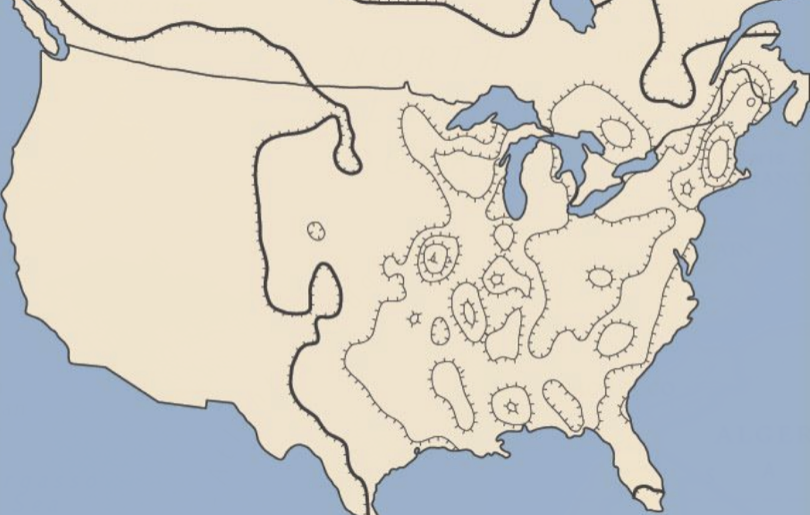
illustrates characteristics of population through the progressive drawing of lines
characteristics such as density change over time
based on principles of interpolations
mathematical guesses of density based on observations
leading to over simplifications but still good to give a sense of where species cluster
Dot
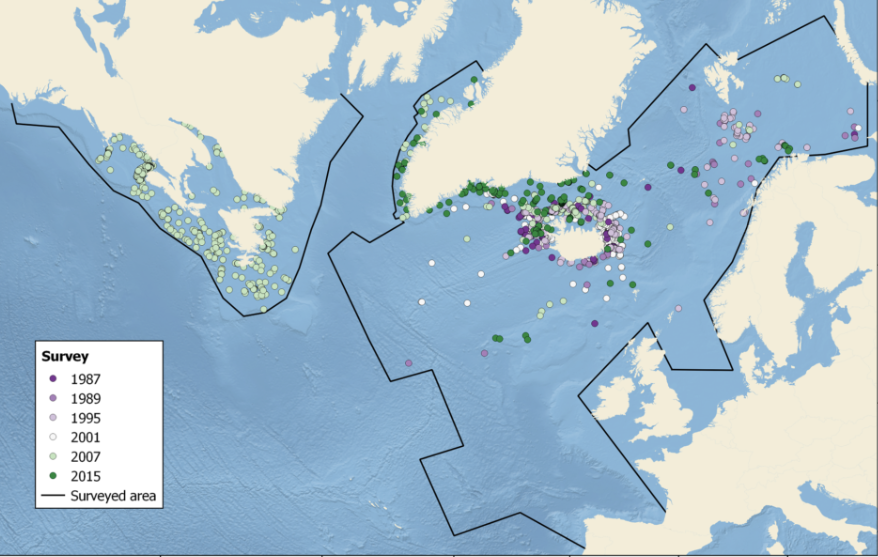
map based on actual observations and recorded encounters with a species
requires extensive field work (and often a lot of time, money, and luck) to conduct a taxonomic study
maps give an accurate record of what species the researcher may actually come across, but rarely gives an accurate representation of the actual distribution of the species since depends so much on research observation
records improving thanks to citizen science projects
issues with untrained eyes having difficulty mis-identifying species
even less helpful at identifying individuals
observed individuals can be plotted and then used to design contour maps, or used as the basis for outline maps
3.2- Population Dynamics
Population- The number of a given species in an area (expressed as a raw number - ex. 108 wolves in Yellowstone 2023 estimate)
Source Populations - Environmental conditions favorable to producing an excess population of individuals that then disperse
Sink Populations - Environmental conditions allow for continued life, but without enough resources for excess population so death rates exceed birth rates.
Malthusian Theory- Represents the growth of population as connected to the available resources
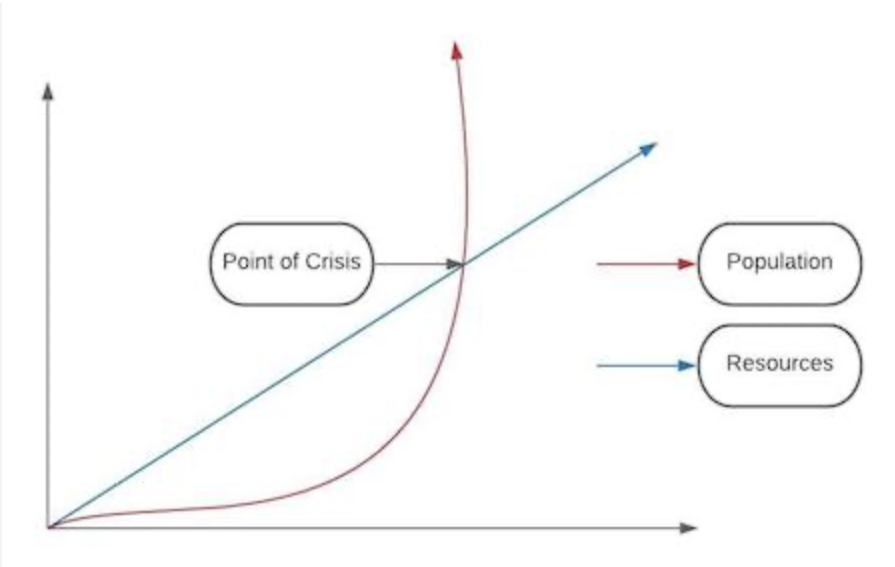
Populations grow exponentially and will continue to grow as long as resources allow
Resources (food) grows mathematically, once population outgrows resources than growth slows then decreases
Tolerance Range- the range of environmental conditions that organisms can survive in
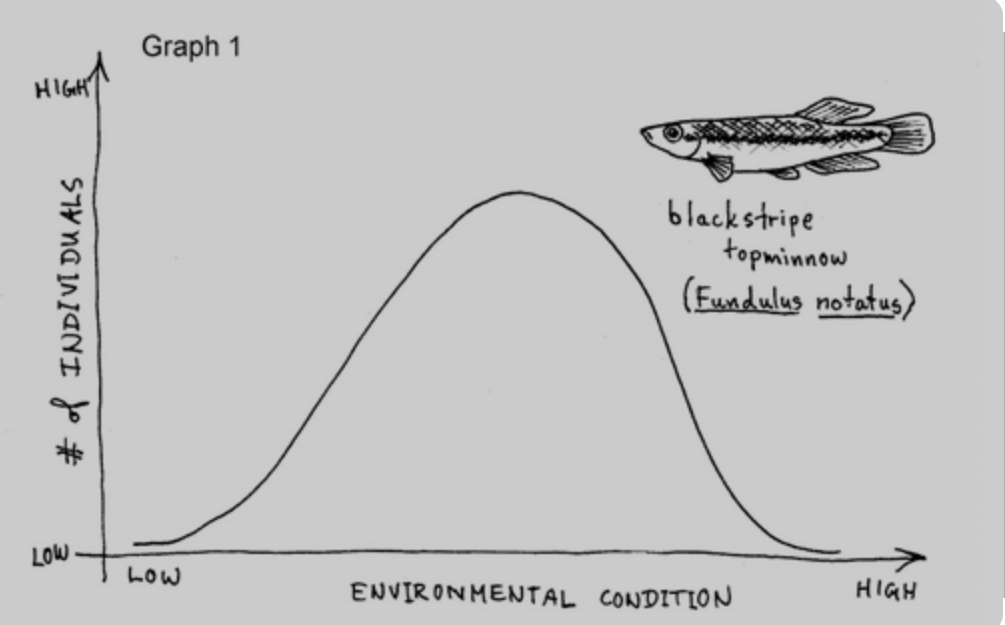
Niche- Combination of biotic and abiotic factors that allow a species to exist
By looking at environmental extremes species is able to survive in, this accounts for resilience to extreme events and other biological indicators
Niche examines potential colonization growth as a function of its developed patterns of spatial growth.
Fundamental Niche- Species potential given no outside factors
Realized Niche- What the species is actually able to accomplish given competition
Hutchinson's Multidimensional Niche Concept - Conceptualization of the abundance of a species as a result of environmental conditions.
Focuses on where species are able to exist based on ecological conditions
Leads to individuals being aggregated (clumped) together
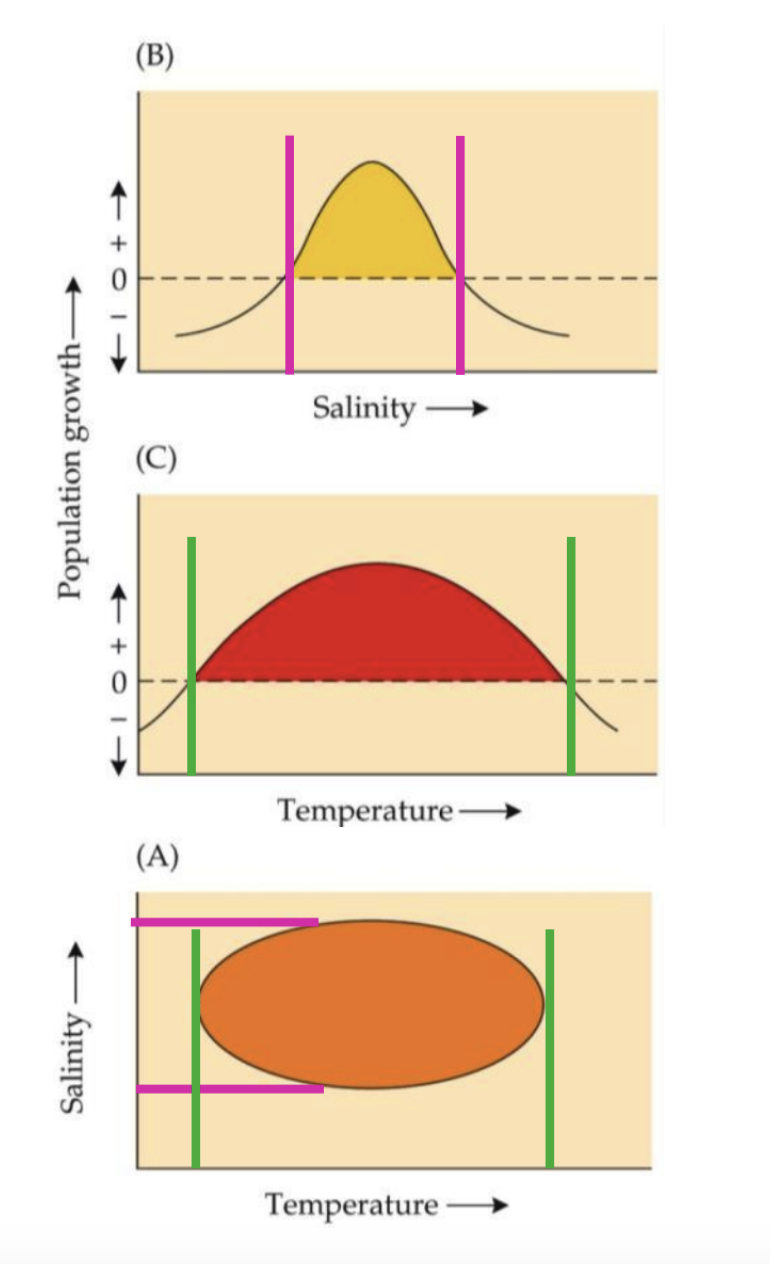
/
Population Distributions- The pattern of where populations are located within an area.
clustered, uniform, or random
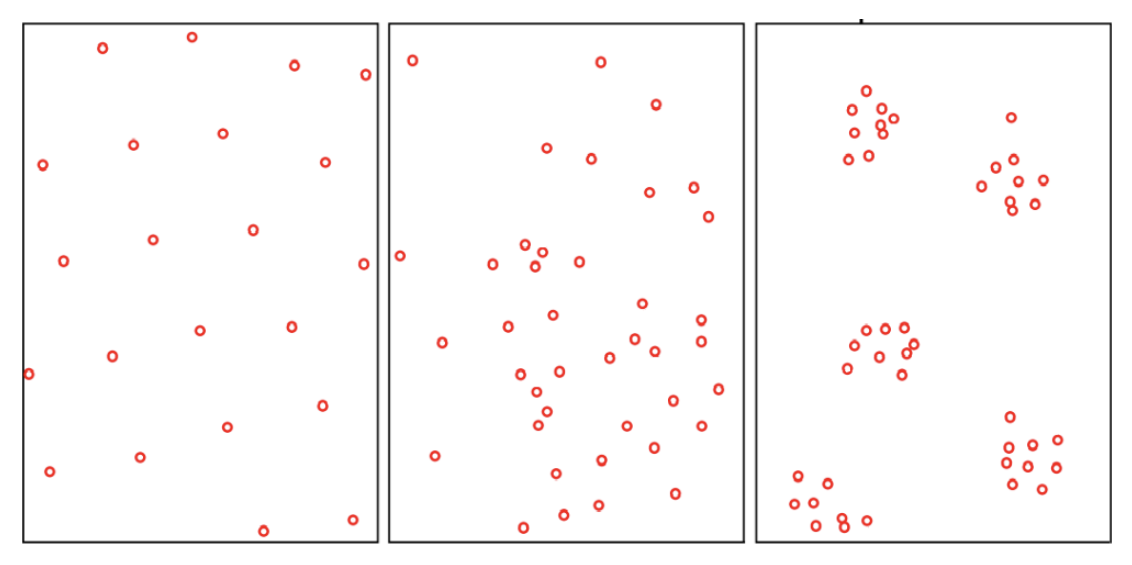
ask what specifically to know about population, if this is not enough info refer to notes in module
3.3- Limitations on Range
The range of a species is dependent upon the limitations of the species itself, but also on a number of external factors including physical Environment, Disturbances, Biological Interactions, or some combination of 2 or all of these.
Can determine whether a taxon (general term for any taxonomic category) is physically fit to survive in an area
May act as barriers preventing spread of taxon to different areas.
Physical Limitations
Temperature- Taxons restricted in growth by temperature extremes, or can live but not reproduce
Precipitation- Plant species require certain levels of precipitation to grow and reproduce, if plants do not repopulate then animals who rely on them suffer as well (ex. desert)
Soil Moisture- Connected to precipitation and relative humidity. Needed to sustain species of plants (ex. bogs)
Light Saturation- Amount of direct or indirect solar radiation, needed to sustain species of plants (ex. forest floor)
Wind- Require plants with root structures designed to cope and animals able to sustain winds (ex. timberline)
Extreme Weather and Seismic Events- (Fire, Volcanism, hurricanes, floods, blizzards, etc..) can have rapid wide-spread effect on species
Can also come in form of pestilence, invasive species, disease, and over-grazing
Impacts resource availability, kills individuals (impacts mating and generational progression)
Biological Limitations
Competition - Species who have similar resource requirements and share similar space will compete with each other for resources
Leads to exploitation (use up resources so other species can not), or interference (species exerting dominance over one another for control of resources
Predation - Interaction where one species suffers and the other benefits. Can be herbivore-plant, parasite-host, predator-prey relationships leading to predator seeking out prey, or prey's range being restricted by predators
Mutualism - Relationship where species are benefited more or less equally by the presence of each other
Facilitation - Increase in one species directly aids in the growth of species who depend on it.
3.4- Endemism and Cosmopolitanism
Ancestral Biota- The original flora and fauna that inhabited a geographical area
Endemic - Meaning a species that only exists in one particular region
Happens for three reasons
It is their center of origin and they never dispersed
Their range has shifted since their origination
Their range has shrunk and they now exist only only a section of their former range.
Cosmopolitan Species are those that are widely distributed and can be found in a variet of geographic locations
Provincialism - The existence of many endemic flora and fauna in a distinct geographic location
Leads to the building of an identity of a place due to its uniqueness (ex. no where in the world is there such a large gathering of species in the numbers of the Amazon Rainforest)
Persistence - The lack of movement by a particular species
Autochthonous Endemism- A species that is Autochthonous Endemism may have once existed in multiple locations, but now only exists in its native range.
At one point they were members of a different species, but after having been cut off from the rest of the species they evolved independently to specialize in their new habitat - leading to a species that is unique enough to be considered a different species than what it originally had been.
Allochthonous Endemism - Species that once existed somewhere else, migrated to a new area, and became extinct in the old region so that they only exist in an area that is not the center of origin
Disjunction - A species that is found in two disconnected geographical areas, but not found between them.
May have at one point but no longer does
May have simply passed through as a corridor of dispersal - will be fossil or skeletal evidence of passage
Convergence - Two independent species that evolve separately, but appear to be a single disjunct species
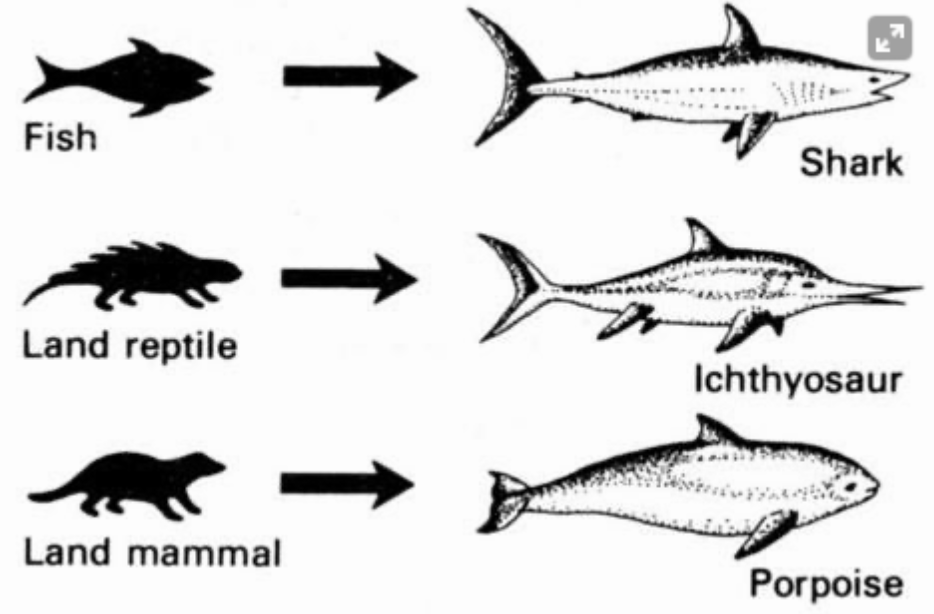
3.6- Wallace Line
Wallace Line- a biogeographic boundary (the meeting point of two regions of biodiversity that are highly distinct) a hypothetical boundary that separates the biogeographic regions of Asia and Australia
species on either side of the proposed line vary heavily, with different adaptations and features. each side of the island has a completely different makeup of species.
supported by ideas of vicariance (pangea)(tectonic plates)
species on the asia side of the islands are more native to asia (asian elephats, tapirs, tigers)
species on the Australia side of the islands are more native to Australia (koala, etc.)
geological past represents the biological present
3.7- Island Biogeography
Distance from Mainland- an island farther from the mainland may have less species than one that is closer because there is a more difficult barrier for species from the mainland to cross to arrive at the island
Island Size- an island of a smaller size may have less species than an island of bigger because there are less resources and land to support more species
Location of Island- an island in a certain geographic realm on earth may have less more more species than another
frigid zone island will probably have less species because only some species are adapted to those conditions and can survive
a torrid zone island will likely have more species because many species are fit to survive in the conditions around the torrid zone
think species energy theory!
MacArthur-Wilson Equilibrium Theory of Island Biogeography
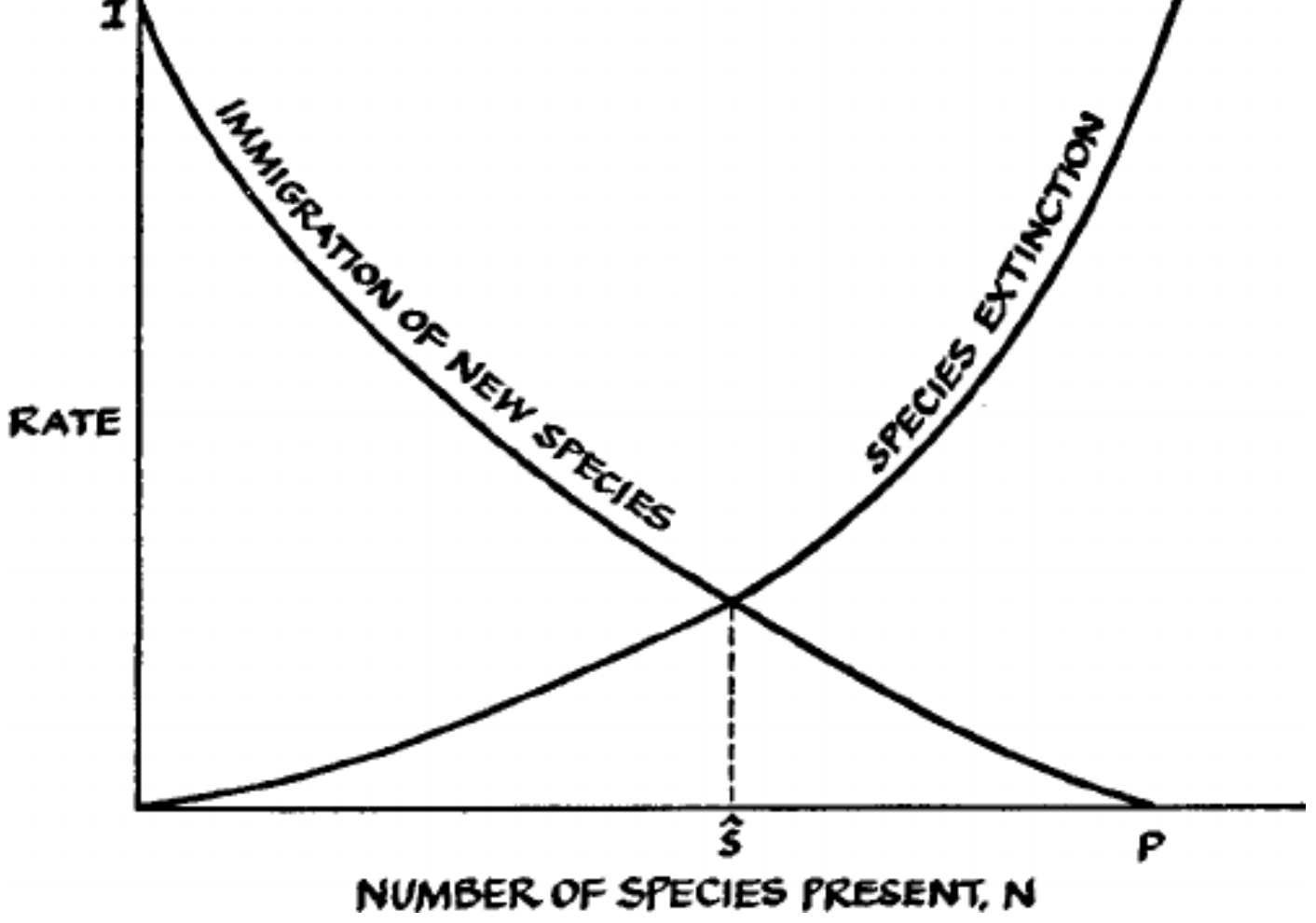
Immigration: When an island is empty, lots of species can colonize it, so immigration is high. But as more species arrive, there are fewer new ones left to come, so immigration slows down.
Extinction: When an island has few species, extinction is low because there’s less competition. But as more species live there, competition increases, and some species die out.
Equilibrium: Over time, immigration and extinction balance each other out. This creates a stable number of species on the island, called the equilibrium number.
Review
Species-Energy Theory explains that areas with more available energy support more species
More energy = more resources: When an environment has lots of energy, it can produce more food and resources (like plants growing in warm, sunny places). This supports larger populations and reduces the risk of species extinction.
More individuals = more species: With more energy, there are more individual organisms. This increases the chances for more species to coexist and evolve.
Hotspots of biodiversity: That’s why tropical areas (warm, sunny, and energy-rich) have more species than colder or less productive places like deserts or polar regions.
Vicariance
Dispersal
Barriers
Speciation
Adaptations
species energy theory- the more resources/energy a section of land has availalbe, the more species will exist and thrive there. leads to a biodiversity hotspot
macarthur wilson equilibrium- new island with lots of resouurces, many species will migrate to it at a high rate. with few species in the beginning they will thrive because of low competition and hgih resources. as more species migrate resoruces will be less afvailable, leading to extinction of some species. The extinction and migration rate will eventually even out, leading to an equillibrium on the island.
wallace line- imaginary biogeographic boundary between island cluster between asia and australia. Asia side has completely different animals from australia side, even though they are so close together. This is probably from vicariance (pangea) (plate tectonics)
malthusian theory- resources expand mathematically while population grows exponentially. When they meet together the population will slowly decrease to match up with the amount of resources trhat can support that population
hutchinsons multi dimensional niche concept-
island biogeo: distance from mainand, size of island, geographic location
ancestral biota- first group of flora and fuana to inhabit a specific area
endemic species- species found only in one area on the globe
cosmopolitan species - species found all over the globe
provincialism- many endemic species found in one area- think madagascar/amazon
persistance- type of endemism, the species dont move from where they originally were
autochthonous endemism - type of endemism, the species separted ffrom the rest of the population and evolved to be their own unique species or used to exist in many locations but now only exist in one range
allochthonous endemism- type of endemism, species once existed somewehre else, migrated, the old population went extinct
disjunction- species that is found in two disconnected biogeographic areas
convergence- species evolved from completely different animals that end up looking very similar and are often mistaken for disjuncted species
physical range limitations: tempterature, preciptation, soil moisture, light saturation, wind, extreme weather/sesimic events
biological range limitations: competition, predation, mutualism, facilitation
source populations- populations with resources allowing for large population growth, the excess population then disperses to other areas
sink populations- populations with limited resources, they dont allow for population growth but can sustain the current population. Death rate higher than birth rate
tolerance range- the range of conditions a certain species can withstand
niche, fundamental and realized- fundamental is without limiting conditions like competition and realized factors in limiting conditions. niche overall: combination of biotic and abiotic factors that allow a species to survive
range- geographic distirbution of plantsor animals